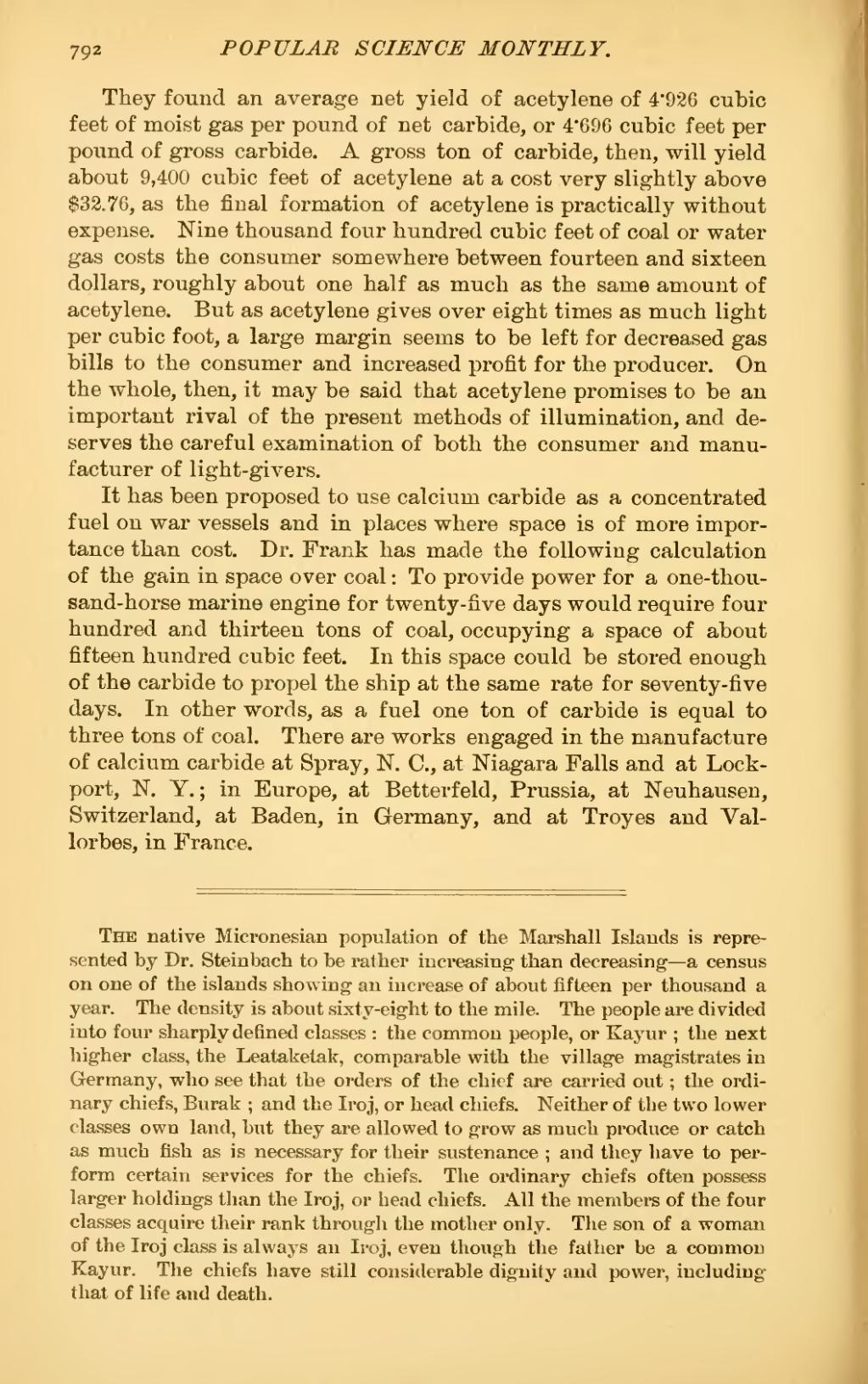They found an average net yield of acetylene of 4·926 cubic feet of moist gas per pound of net carbide, or 4·696 cubic feet per pound of gross carbide. A gross ton of carbide, then, will yield about 9,400 cubic feet of acetylene at a cost very slightly above $32.76, as the final formation of acetylene is practically without expense. Nine thousand four hundred cubic feet of coal or water gas costs the consumer somewhere between fourteen and sixteen dollars, roughly about one half as much as the same amount of acetylene. But as acetylene gives over eight times as much light per cubic foot, a large margin seems to be left for decreased gas bills to the consumer and increased profit for the producer. On the whole, then, it may be said that acetylene promises to be an important rival of the present methods of illumination, and deserves the careful examination of both the consumer and manufacturer of light-givers.
It has been proposed to use calcium carbide as a concentrated fuel on war vessels and in places where space is of more importance than cost. Dr. Frank has made the following calculation of the gain in space over coal: To provide power for a one-thousand-horse marine engine for twenty-five days would require four hundred and thirteen tons of coal, occupying a space of about fifteen hundred cubic feet. In this space could be stored enough of the carbide to propel the ship at the same rate for seventy-five days. In other words, as a fuel one ton of carbide is equal to three tons of coal. There are works engaged in the manufacture of calcium carbide at Spray, N. C, at Niagara Falls and at Lockport, N. Y.; in Europe, at Betterfeld, Prussia, at Neuhausen, Switzerland, at Baden, in Germany, and at Troyes and Vallorbes, in France.

